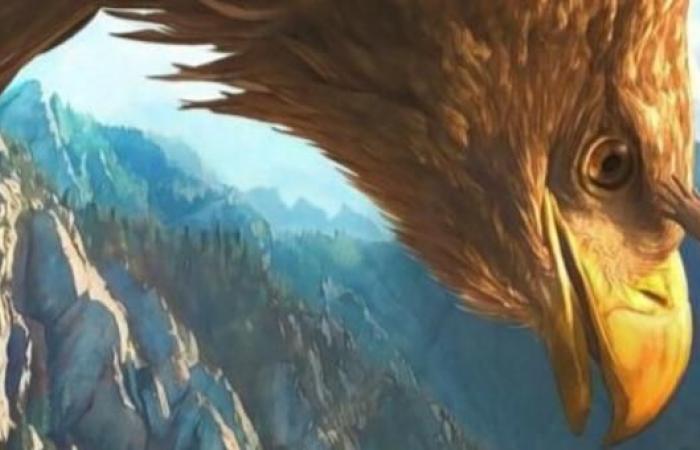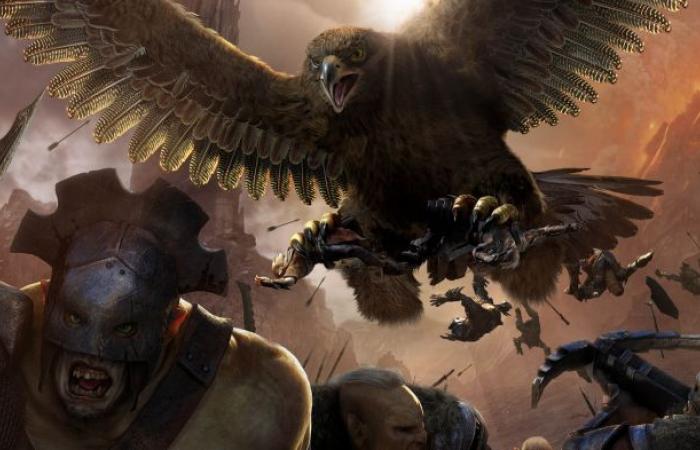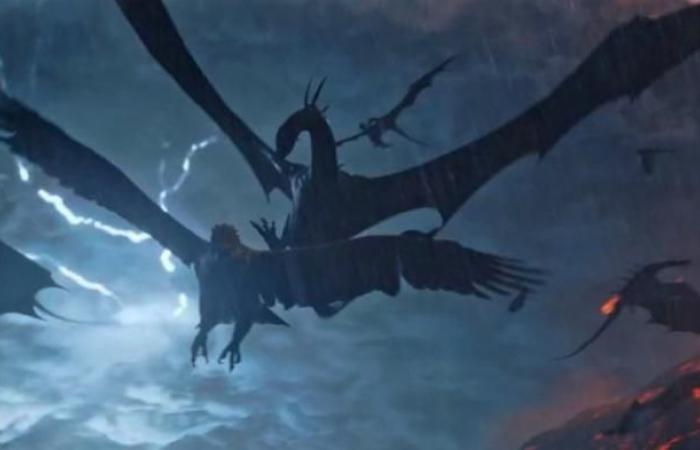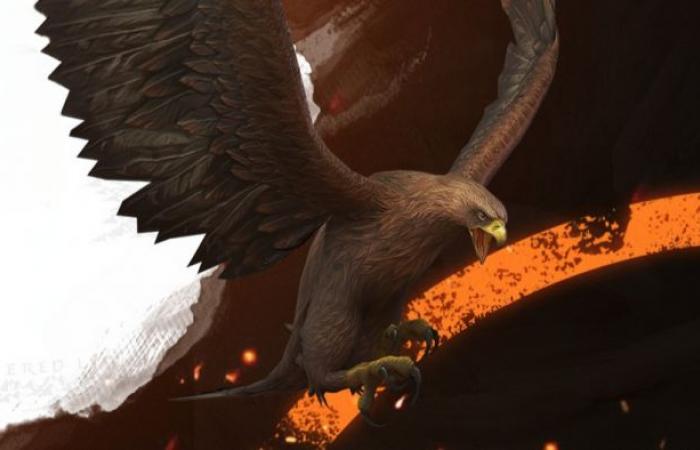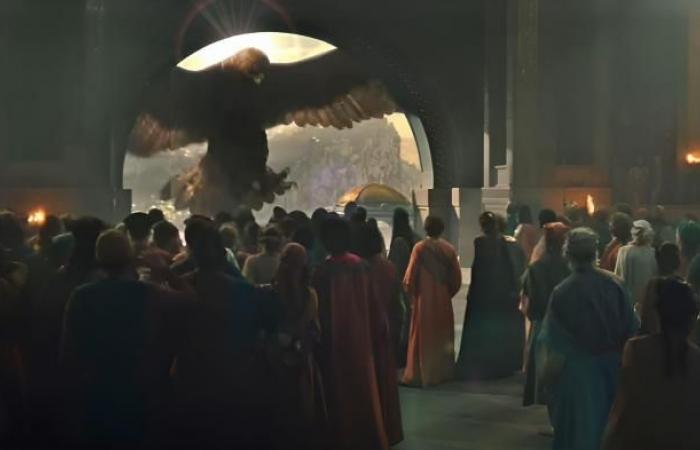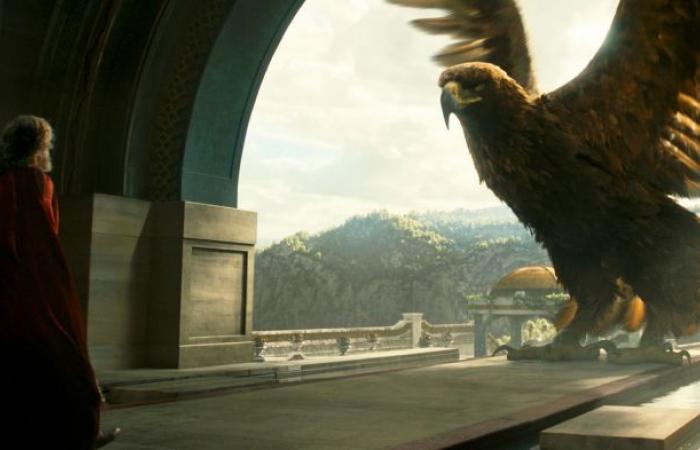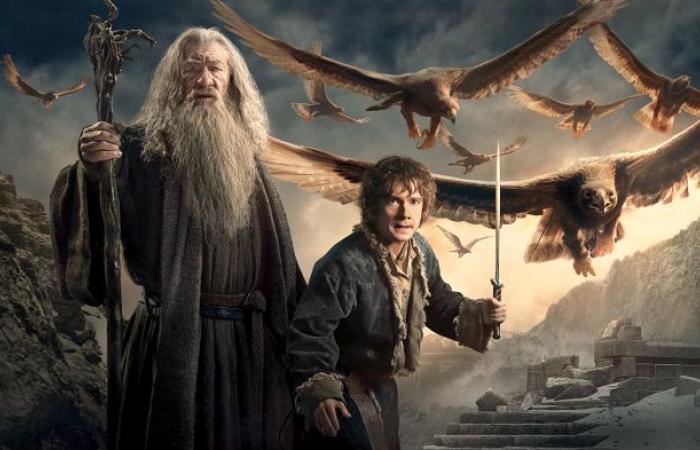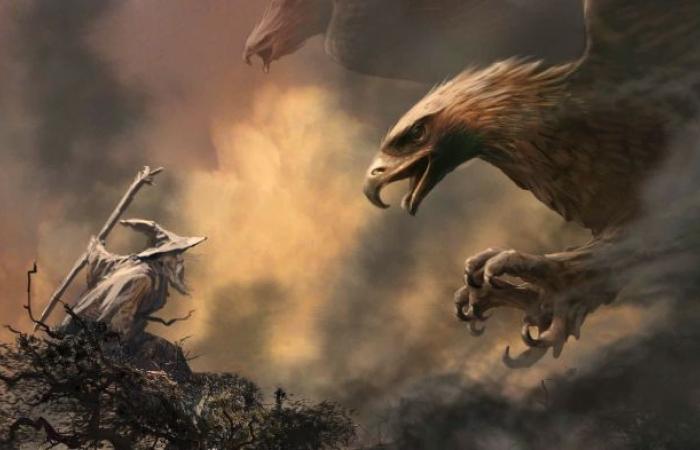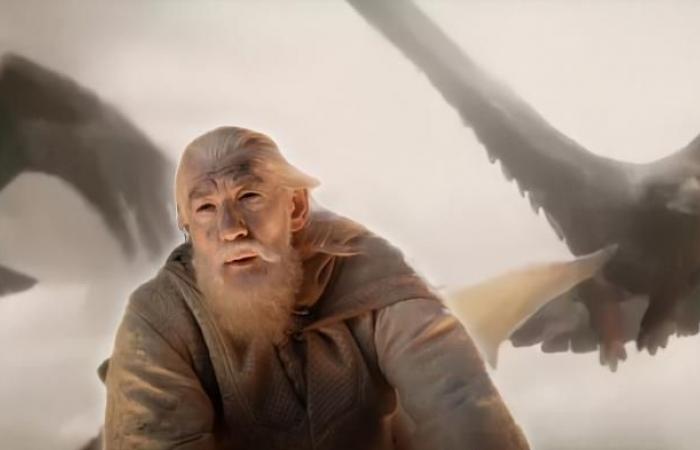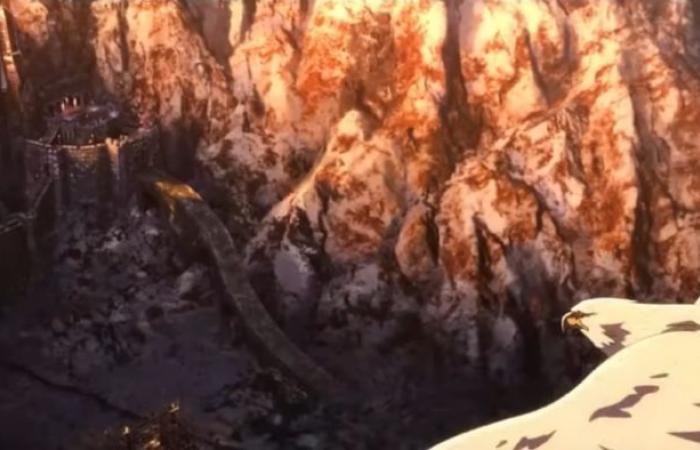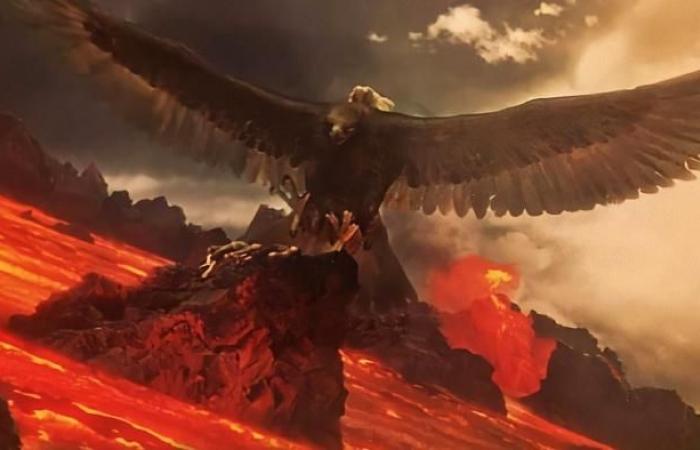In Lord of the Ringsthe Great Eagles are powerful allies of the free peoples of Middle-earth. Tolkien imagined these characters as separate, majestic beings, capable of fighting and defeating the most terrible creatures in his universe. From their place in Tolkien's writings to their role in Peter Jackson's films and the Expanded Universe, here are 8 facts you (maybe) didn't know about the Great Eagles.
#8 Eagles allowed Tolkien to create a new literary process
The convenient and sudden arrivals of the Eagles in Tolkien's stories have often been mocked. or criticized. Detractors of these scenes often describe them as convenient Deus ex Machina for the story. Well, know that they are wrong! Indeed, if you want to shine in front of your geek friends, all you have to do is answer that “no, the Eagles are not Deus ex Machina, but eucatastrophes”. It was Tolkien himself who conceptualized this figure of speech to differentiate credible narrative twists from simple miraculous outcomes like Deus ex Machina. Unlike the Deus ex Machina, which resolves an impasse through an often improbable event, the eucatastrophe follows an internal logic to the story and its universe. It’s a twist, certainly, but a credible one, which preserves the suspension of disbelief.
#7 The first King of the Eagles was a super spy during the war
Thorondor, the first king of the Great Eagles, was a legendary figure in the history of Middle-earth. Designed by Manwë, the leader of the Valar, Thorondor and his people were sent to watch over the exiled Elves and their enemies, such as Morgoth the first Dark Lord, then later Sauron. These majestic creatures were messengers and spies of great power, able to see through all matter except the darkest pits of Morgoth. Thorondor establishes his first lair on Thangorodrim, an evil mountain created by Morgoth himself. Since this summit, he played a key role in several victories against Morgoth's forces.

He also saved many Elves in danger, ensuring that the forces of evil did not advance. any further. He later moved to serve as a spy in Gondolin, a secret city of pacifist Elves, where he befriended King Turgon. He watched over the city, keeping Morgoth's spies away with his vigilance. Unfortunately, despite its power and influence, Thorondor and the Eagles could not prevent the gradual discovery of the limits of their power, notably during the Battle of Utumno Fortress, marking a turning point in the war against darkness. We do not know the fate of this King of Eagles; However, during the final battle against Morgoth, he and his fellows faced the dragons, et he had the opportunity to scribble and significantly injure Morgoth during the confrontation.
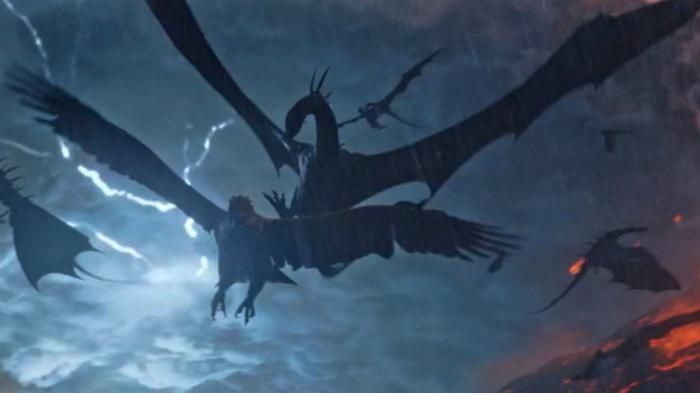
#6 Eagles have no soul
In Tolkien's universe, the progressive appearance of different populations modifies at each stage the vision of the gods on their creation. So even though some creatures appeared before Elves or Men, at that time the gods did not deem it necessary to give souls to these first inhabitants of Middle-earth. In fact, the Eagles, who indeed appeared before the Elves, should not have souls. However, their obvious nobility appeals to Tolkien, who seems, throughout his writings, to be upset at not having allowed his Great Eagles to possess a soul.

Indeed, In his earliest writings, Tolkien seemed to regard the Great Eagles as spirits similar in essence to the Maiar (beings similar to Gandalf), capable of thought and speech. However, with the evolution of its classification system for Arda's creatures, he clarified that only the Children of Ilúvatar (the Elves, the Men, the Dwarves and the Orcs), as well as the Valar (the gods) and the Maiar (the angels, to simplify), possessed a soul (called fëa in this universe), characterized by a will of its own and the capacity for complex communication.

In the late 1950s, Tolkien concluded that the Great Eagles were in fact soulless animals, that the Valar were late endowed with speech and consciousness, but without a real soul or fëa. This decision places them in an intermediate category, between simple animals and incarnate beings endowed with souls, which also makes them similar to their great enemies and evil twins: the dragons created by Morgoth.

#5 The Eagles Failed to Save the Major Kingdoms of Middle-earth
Númenor is a very important island in the universe created by Tolkien. For example, Aragorn's ancestors come from this kingdom. But by the time of the events of Lord of the Rings, during the Fellowship's quest, Númenor had been destroyed and disappeared for centuries. The destruction of Númenor is the result of a long process. First, a king named Tar-Atanamir refuses to cede power to his son, leading to a social schism. Then appear what we will call the Black Númenorians, who refuse to show the slightest respect towards the gods or the Elves. Centuries later, the current king, influenced by Sauron, prepares an invasion of the Immortal and sacred Lands. This action angers Eru Ilúvatar, who destroys Númenor. However, this tragedy could have been avoided if the residents had known how to listen to the eagles.

Indeed, the quality of life and the level of cultural elevation present on the island before it began to decline had long attracted some great eagles who had decided to take up residence on the peaks of Númenor. When the kings became hostile to the gods, the eagles who watched over the inhabitants tried to warn them of the danger their attitude represented. Thus, during numerous festivitiesthe eagles appeared to signal that things were getting worse, but the inhabitants of Númenor could not interpret these interventions as bad omens.

Shortly before the end of Númenor, the gods took the trouble to send a final warning, which aimed for the inhabitants to make the link between the danger they were running and the warnings of the eagles, by directly sending storm clouds shaped like great eagles. In the end, only a handful of Númenorians understood and left the island before its destruction.

#4 No, Gandalf does not have the power to summon the Eagles
At an unspecified date in the Third Age, Gwaihir, leader of the Eagles, is saved by Gandalf from a wound inflicted by a poisoned arrow. From there, a debt is implied between the Eagle and the magician. However, Eagles are actually an extremely ancient species, with independent minds and a way of thinking of their own. Contrary to popular belief, or what the films seem to suggest, Gandalf does not have the power to summon the Eagles. Each appearance of the Eagles occurs either by chance or by an act of grace. For example, in The Hobbit, The Eagles' intervention occurs because they were indirectly alerted by Radagast, at Gandalf's request. While flying over the surroundings, The Eagles spot a gathering of Wargs and assume someone is in danger.

#3 The interactions between Gandalf and the Eagles: at the heart of an inconsistency
In The Lord of the Rings, it is mentioned that Gwaihir, leader of the Eagles, is said to have carried Gandalf only three times, and that these three events are the ones we see in the trilogy. The first takes place when Gandalf is imprisoned by Saruman; at the request of Radagast the Brown, Gwaihir then comes to free him. Then, when Gandalf lies between life and death on the mountaintop after defeating the Balrog, it is again Gwaihir who comes to save him, this time at Galadriel's request. Finally, during the final battle against Sauron, Gwaihir transports Gandalf (now the White) to rescue Frodo and Sam stranded on the erupting Mountain of Destiny.

Although these three sequences allow us to count three rescues of Gandalf by Gwaihir, a lore connoisseur will also remember the help of the Eagles in The Hobbit. However, according to the versions, the “lord of the Eagles” is mentioned without his identity like that of Gwaihir always being specified. To decide, we can therefore say that Gwaihir carried Gandalf the Gray three times, but Gandalf the White only once.

#2 The Great Eagles will be present in the film War of the Rohirrim
As of today (November 2024), few details are available about the film The Rohirrim War, but the trailer surprised fans by showing the return of iconic creatures from the lore, such as the oliphants, the Water Watcher (kraken) and, of course, the Great Eagles. In the history of Middle-earth, the Eagles are often seen as divine interventions, coming to the rescue in times of great distress, like with Thorin and the dwarves or Frodo and Sam. In the trailer, we see a Great Eagle swooping towards Helm's Deep, then being thanked by Hera at the top of a mountain.

Although the context of this meeting remains unclear, this suggests that the Eagles will play a major role in the film. The fate of Hera, daughter of King Helm Hammerhand, remains mysterious even in Tolkien's writings. Perhaps the Eagles will come to save Hera from the same tragic fate as that of her father, who perished resisting the enemy for months after being locked in Helm's Deep.

#1 No, The Eagles cannot take the ring directly into the volcano
The idea of flying the One Ring directly to Mount Doom on the backs of the Great Eagles seems simple, but it doesn't work. First, the Eagles are not Gandalf's servants: they answer only to the Valar and nThere are not “taxis” available to magicians. Additionally, flying over Mordor would immediately attract the attention of Sauron and his armies, greatly increasing the risk of attack. The very power of the Ring is also an obstacle: it corrupts even powerful beings and could destabilize even a Great Eagle. Finally, the Ring would have to be thrown into a specific crevasse inside the mountain, which requires entering directly, a task much more suited to the discretion of hobbits.

And if you liked this article and you want to know even more about the universe of Tolkien's Eagles, you can also discover our file on Radagast or our article on the 15 most powerful beings in Tolkien's universe.

